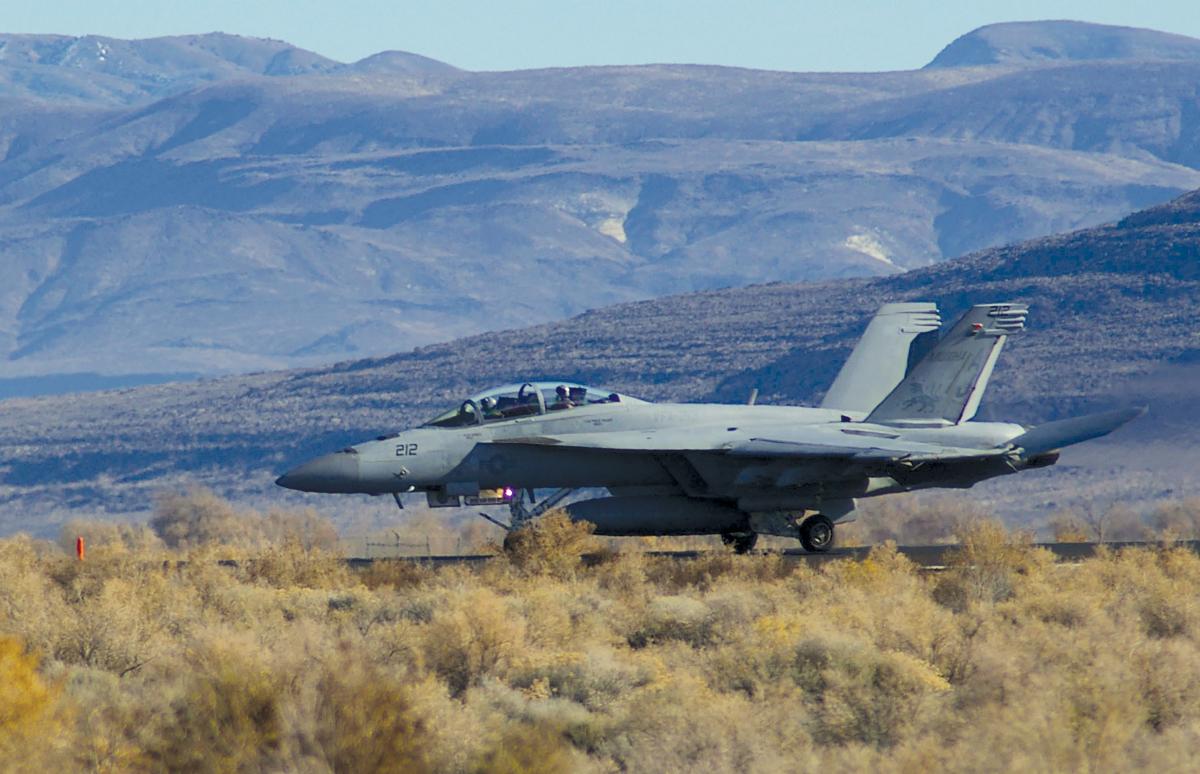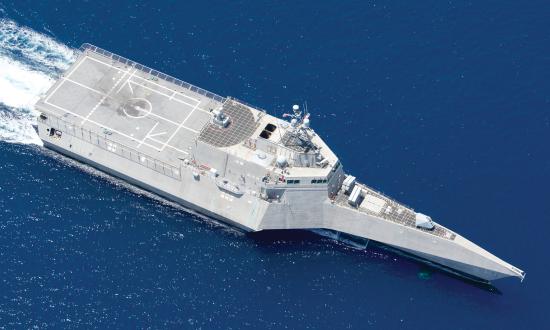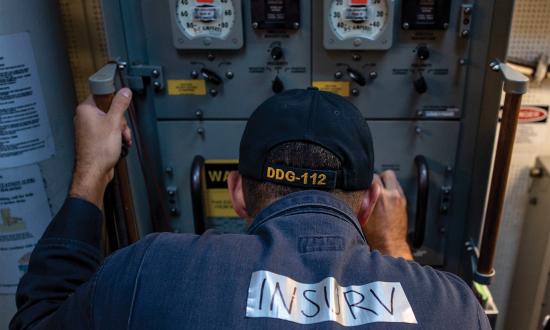Naval intelligence officers (AIs) and enlisted intelligence specialists (ISs) assigned to carrier aviation squadrons are not given adequate baseline training prior to or held to sufficiently rigorous tactical knowledge standards during their tours. These deficiencies yield substandard intelligence support for squadrons and neglect the AI and IS professional development needed to succeed in subsequent tours.
This problem is not unsolvable, but solving it will require leaders in naval aviation and naval intelligence to take a fresh look at how aviation intelligence personnel are trained. AIs and ISs need early training tailored to the platforms and missions they support and continual training thereafter to further develop knowledge and refine skills.
A Quick History of Aviation Intelligence
Early in World War II, aviators largely were responsible for analyzing the intelligence they collected. As the war progressed, however, the Bureau of Aeronautics (BuAer) realized the demand for specialized intelligence support outstripped aviators’ abilities. BuAer established the Naval Air Combat Intelligence Officers School to train air combat intelligence officers (ACI officers with the 1350 designator).1
The end of World War II brought large-scale military demobilization, but with the start of the Korean War, the need for trained ACI officers again became urgent. The Navy scrambled to locate qualified ACI officers and recalled 52 reservists to active duty. These seasoned World War II–era ACI officers applied their experience to refine afloat intelligence support procedures and articulate requirements to the reconstituted Air Intelligence School, to ensure new ACI officers would arrive prepared to support naval aviation squadrons.2 In the 1950s, the Navy established a restricted line officer community for intelligence (special duty intelligence officers with the 1630 designator), and in 1968, the Navy included ACI officers in an expanded 1630 community.
From that point, very few naval intelligence officers remained specialized in supporting aviation. Instead, most would follow general naval intelligence career paths that might include only an initial AI tour with a naval aviation squadron (some would return as O-4s to serve as air wing intelligence officers).3 This model has not changed appreciably in more than 50 years.
Meaningful Air Intelligence Baseline Training
Today, the Naval Intelligence Officer Basic Course (NIOBC) and Intelligence Specialist A and C Schools, all located at the Navy and Marine Corps Intelligence Training Center in Dam Neck, Virginia, introduce AIs and ISs to basic military intelligence and the breadth of naval operations it supports. Because these personnel graduate their basic courses to serve in anything from a tactical unit to a strategic-level watch floor, in-depth aviation intelligence coursework is not included.
NIOBC graduates detailed to aviation squadrons attend a two-week Basic Aviation Intelligence Course (BAIC) taught by the intelligence department of Strike Fighter Weapons School Atlantic (SFWSL) at Oceana Naval Air Station in Virginia Beach. ISs do not attend BAIC after completing their initial intelligence training. The Naval Aviation Warfighting Development Center (NAWDC) in Fallon, Nevada, is currently doing a BAIC curriculum review, because SFWSL is not currently manned or resourced to run baseline training for every naval aviation platform as well as specialized instruction in FA-18 Super Hornet intelligence support.
Responding to feedback from intelligence personnel and their squadrons, the EA-18G Growler community took action and enhanced its airborne electronic attack intelligence training, which is administered by a well-resourced, well-staffed intelligence department at the Electronic Attack Weapons School at Naval Air Station Whidbey Island, Washington.4 The introductory course taught to new AIs and ISs (and cryptologic technicians technical) arriving to their squadrons applies baseline skills to support EA-18G squadron operations. An intermediate phase focuses on mastery of skills through application, and an advanced concepts course is taught during unit-level predeployment workups.
While some introductory-level concepts could be taught at BAIC, most topics are unique to the EA-18G mission. The training of tactical intelligence personnel must be based on the tactics and capabilities of the platforms they support.
The commanders of Naval Information Forces and Naval Air Forces should collaborate to replicate the EA-18G community’s intelligence training program across all of naval aviation. A baseline of platform- and mission-specific aviation intelligence training requirements must be established. Commander Naval Air Forces should fund the necessary staff and resources at NAWDC and type wing weapons schools to teach the new syllabi.5
Establish Standards to Advance Tactical Excellence
Carrier air wing (CVW) squadrons on both coasts complete many predeployment training evolutions. The capstone evolution is Air Wing Fallon, conducted by NAWDC, which tests a CVW’s ability to function as an integrated strike projection entity with minimal external support. The NAWDC staff recently debuted an updated Air Wing Fallon curriculum that increases demand for high-caliber intelligence support. Lacking platform- and mission-specific intelligence training prior to attending Air Wing Fallon, many squadron AIs and ISs will not be able to meet that demand.6
Squadron AIs and ISs often arrive at Air Wing Fallon with little in-depth knowledge of the adversary, the platform they support, or the mission-planning process.7 As a result, NAWDC’s intelligence instructors have to teach the CVW intelligence team the basics of the job, when they should be refining advanced capabilities. Supporting naval aviation missions requires continual updates to knowledge and skills. NAWDC should mandate in-squadron training for aviation intelligence personnel as a prerequisite for Air Wing Fallon. The type wing weapons schools should develop the curricula, and training should be overseen by squadron training officers.
Finally, to help AIs and ISs devote the necessary time to learn both U.S. naval aviation tactics and capabilities and those of an increasingly complex adversary, to the greatest extent possible they should not be saddled with time-intensive collateral security duties. Personnel and physical security duties are best performed by specially trained yeomen and administrative officers. Funding and filling these billets will put security duties in the hands of experts and allow intelligence personnel to be more proficient supporting ready rooms.
Building Better Intelligence Professionals
AIs and ISs who are well-trained and knowledgeable on the threats will provide high-quality intelligence support during carrier strike group operations. This level of proficiency and honed analytic tradecraft also will benefit the future commands in which these AIs and ISs will serve. Their thorough understanding of U.S. Navy systems, tactics, and operations will help them to contribute more effectively in joint planning and execution environments.
U.S. adversaries are as skilled as they have ever been and are fielding better equipment than they ever have. To use former Chief of Naval Operations Admiral John Richardson’s words: “The margins of victory are razor thin, but decisive.” Excellence in naval intelligence support to aviation could be the decisive factor in that victory.
1. CAPT Wyman H. Packard, USN (Ret), A Century of U.S. Naval Intelligence (Office of Naval Intelligence, Washington, DC): 170–73.
2. Packard, A Century of U.S. Naval Intelligence, 34,175–76.
3. Packard, 34.
4. Electronic Attack Weapons School intelligence officers attend graduate-level platform- and mission-focused training at the Growler Tactics Instructor Course taught by the Airborne Electronic Attack Weapons School (HAVOC), the EA-18G sister command to TOPGUN and also in Fallon, Nevada. Royal Australian Air Force (RAAF) exchange intelligence officers posted to EAWS attend RAAF weapons and tactics instructor courses prior to arrival.
5. Type wing weapons schools, including the Strike Fighter Weapons Schools Atlantic and Pacific and the Electronic Attack Weapons School, are training commands established on the basis of their respective aircraft and charged with teaching graduate-level tactics, techniques, and procedures to fleet squadrons.
6. Carrier Air Wings 3, 11, and 17 Air Wing Fallon training officer out briefs, November, August, and April 2020.
7. NAWDC staff observations indicate that EA-18G Growler AIs and ISs routinely perform above average in Air Wing Fallon.





